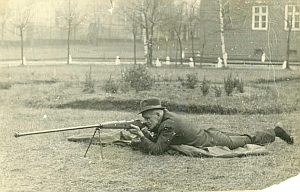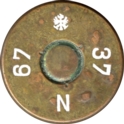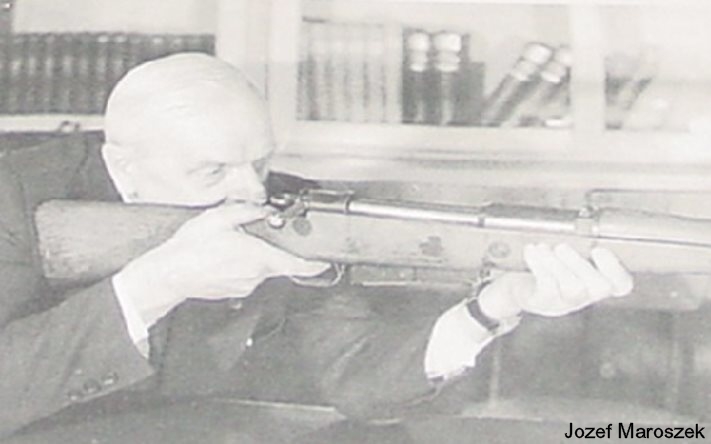



After the end of WW1 and into the early 1920’s a lot of research went into the development of not just an anti-tank rifle, which soldiers first encountered during the last stages of the War, but also to defeat artillery pieces as a more economical means of defence. The first anti-tank rifle was the German 13mm Mauser T-Gewehr Mk.18 which was a larger version of the K98 that was operated by a two man team. It was also the only anti-tank rifle that saw service during WW1. It was capable of penetrating 20mm armor at a distance of 100m, but the slow rate of fire and the brutal recoil lead to it being discontinued at the end of the war, but research into anti-tank rifles did not stop with the demise of the T-Gewehr. Developments by Gerlich during 1928 for an ultra-fast round in the Halger 280 HV Magnum with a muzzle velocity in excess of 1,000 m/s (almost 3,300fps) were studied by Polish engineer Tadeusz Felsztyn. Tests were done by the Research Office of the National Ammunition Factory at Skarzysko-Kamienna with the purpose of constructing a 7,92mm round with a muzzle velocity in excess of the Halger round. It was at this stage that Jozef Maroszek, a graduate from the Mechanical Department of Warsaw Technical University became involved in the project. He designed the Karabinek KP-32 anti-tank rifle for his academic thesis and assisted with the redesign of the cartridge and by the end of 1934 the 7,92×107 was completed.
During October 1935 the final test rifles were ready. A lot of time was spent during 1933 to mid-1935 in research, because the first trials proved unsuccessful, as the earlier barrels only lasted about 30 rounds before it needed to be replaced. The rifles submitted during October had a barrel life of about 300 rounds and initial tests showed that it could penetrate 33mm of steel plate at 100m at an angle of 90° and further tests conducted at the factory at Pionki showed penetration of 15mm at an angle of 30° at 300m. The official name of the Marozek rifle was “karabin przeciwpancerny wz.1935” (anti-tank rifle wz. 1935) and was to be issued to each infantry company and every cavalry squadron had to be equipped with three rifles, each managed by a team of two soldiers. The project was deemed classified and it was named Kb UR, wz.35 “Ur” which could have suggested some form of misdirection that the weapon was designated for export to Uruguay. During early 1938 the war ministry ordered 7,610 rifles, of which at least 6,500 were delivered by September of the same year. Delivery crates – containing one Maroszek WZ 35, three replacement barrels and three full magazines – were sealed with strict orders that the seal was only to be broken under direct orders of the Defense Minister. Until July 1938 only a very restricted and select group of people (again under strict nondisclosure orders) – mostly military commanders of different command levels – was shown the weapon. The result was that in many cases the soldiers that were to use it didn’t even see the weapon before the German invasion.
The weapon proved effective enough against German Panzer as well as armoured vehicles up to 400m at that time; however it only saw limited use as a lot of divisions were not even aware of the weapons’ existence. Due to the rapid German advance through Poland, they captured considerable numbers of these weapons still unissued in the armories; it received the German designation Panzerbüchse 35(p) (Tank Rifle, “p” for “Polish”) – abbreviated as PzB 35(p) – but was also called Panzerbüchse 770(p) when issued to German troops and used against the French during early 1940. About 800 rifles were sold to the Royal Italian Army where it was used together with the Solothurn S-18/1000 with the designation Fucile Anticarro Modello 35(P). As a result of rapid advances in armor plating during the war, most of these weapons became useless against tanks and were used mainly against soft skinned, non-armored vehicles.
The logo with a Polish eagle indicates Panswowa Fabryka Amunicji of Skarzysko-Kamienna
N = Norblin S.A. Warsaw, metal supplier.

